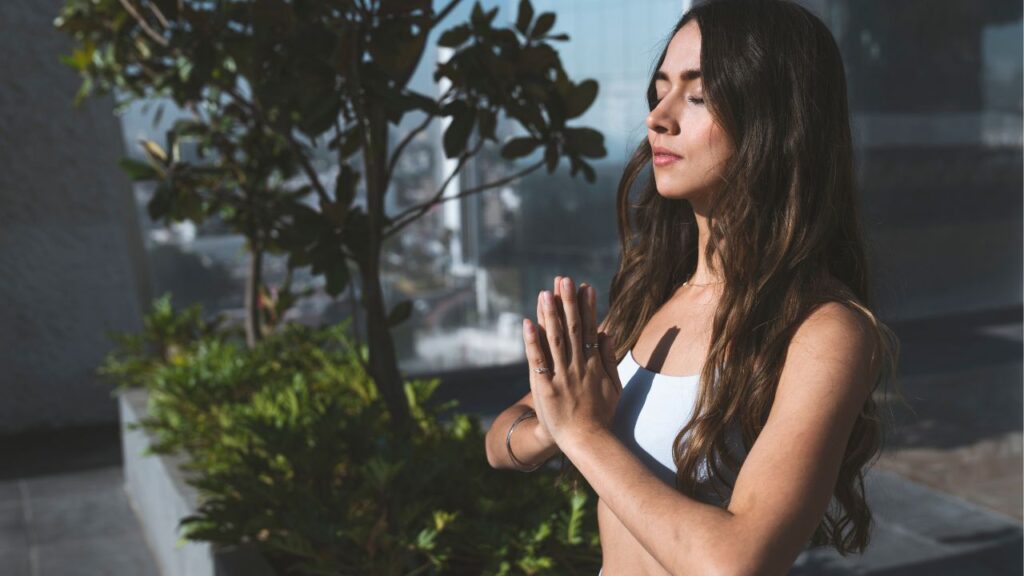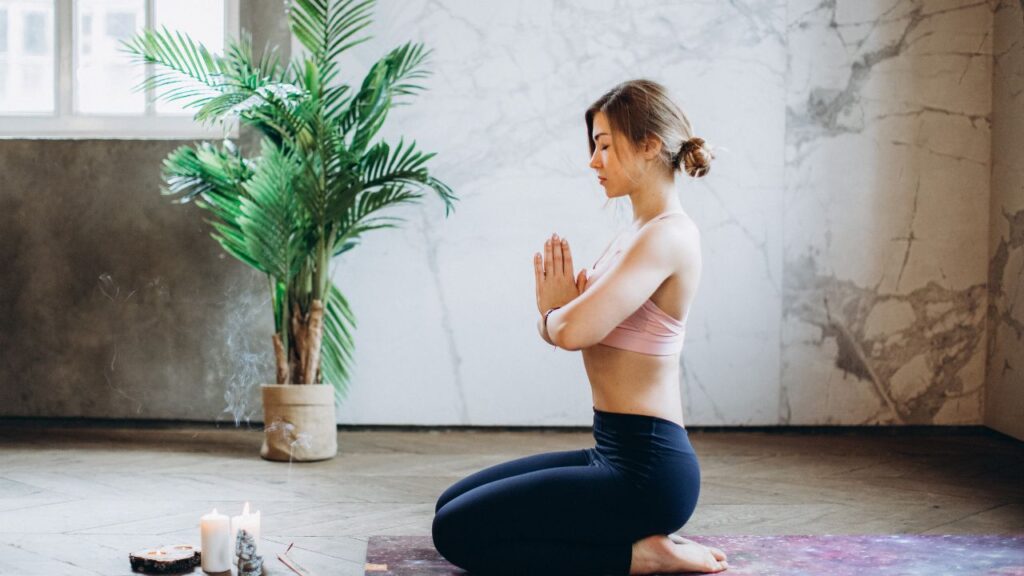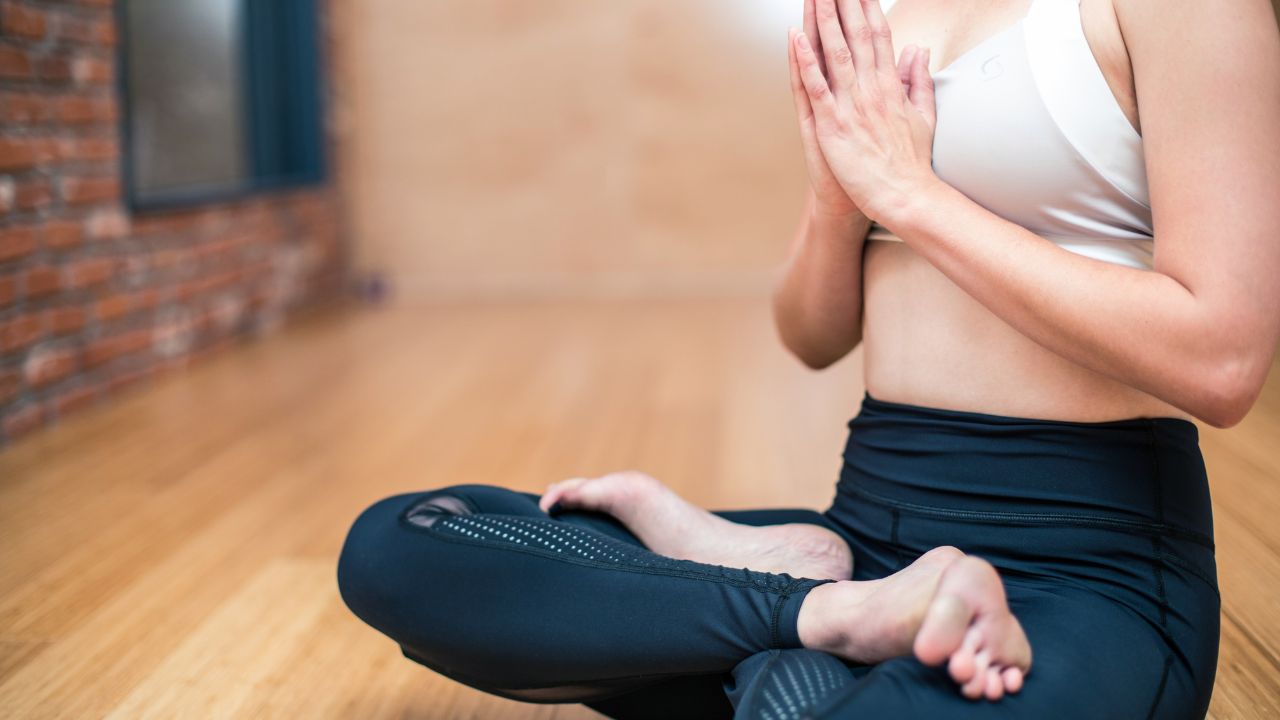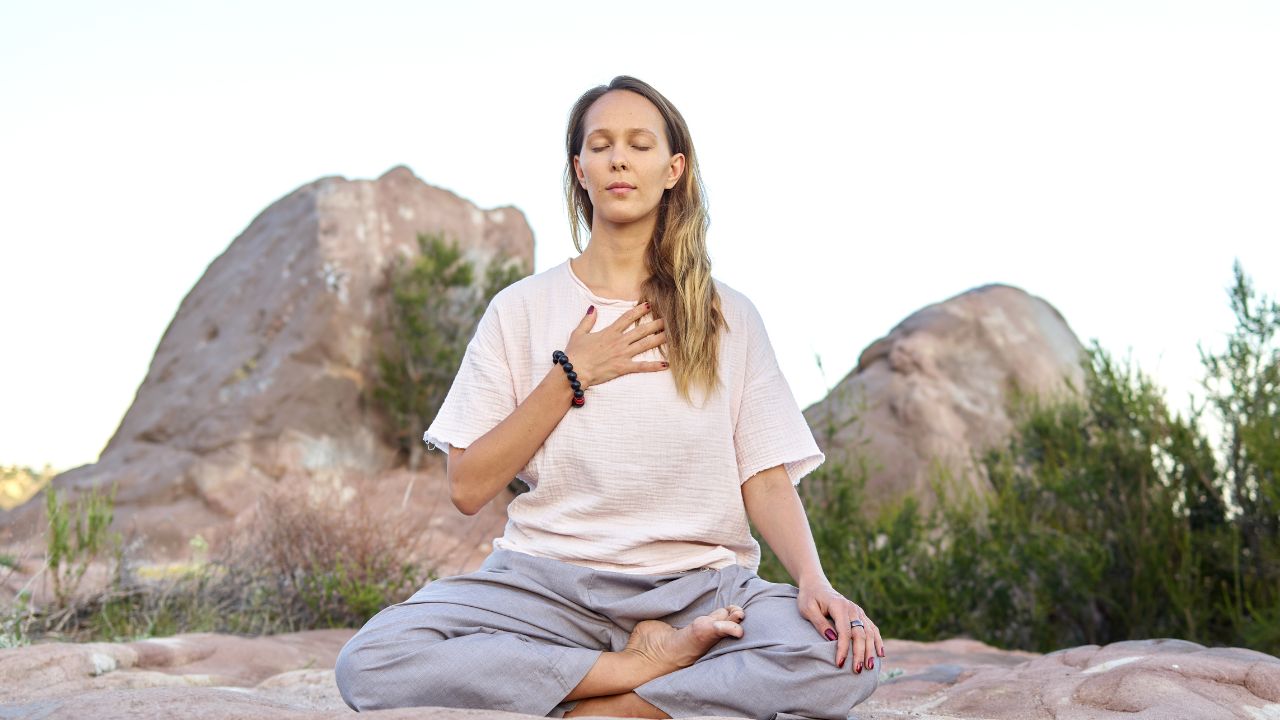In the latest fast-paced international, in which strain and distractions abound, the historical practices of mindfulness and meditation offer a chilled balm for our careworn minds and weary souls.
With the consistent hustle and bustle of contemporary existence, it’s far crucial to take a step again, breathe, and reconnect with our internal selves.
In this entire manual, we can delve into the arena of mindfulness and meditation practices, exploring their profound impact on nurturing our mind, body, and soul.
What’s mindfulness?
Mindfulness is an intellectual workout and state of interest characterized by being fully gifted and engaged in the contemporary second.
It entails paying deliberate and non-judgmental interest in your thoughts, feelings, bodily sensations, and the surroundings around you.

Mindfulness encourages a receptive and open mindset toward your reviews, permitting you to study them without trying to change or keep away from them.
Key elements of mindfulness encompass:
1. Present-moment consciousness: mindfulness includes focusing your hobby on the triumphing second, in place of residing on the beyond or annoying approximately the destiny. It’s miles about experiencing existence as it unfolds in actual time.
2. Non-judgmental statement: mindfulness encourages you to have a look at your mind, emotions, and sensations without judgment or complaint. In preference to labeling opinions as “exact” or “horrific,” you domesticate an impartial and accepting attitude.
3. Recognition: mindfulness entails acknowledging and accepting your tales, despite the fact that they are uncomfortable or hard. This reputation lets you approach conditions with more equanimity and resilience.
4. Attention: mindfulness frequently begins with directing your interest to a selected focal issue, which encompasses your breath or bodily sensations. Awareness is an important component of mindfulness exercises that allows you to live anchored in the present.
5. Reputation of breath: many mindfulness practices contain the use of the breath as an anchor. Focusing on your breath facilitates you to stay grounded and centered, presenting a point of connection with going back to at the same time as your thoughts begin to wander.
6. Cultivating conscious attitudes: mindfulness encourages cultivating attitudes like patience, curiosity, kindness, and compassion closer to yourself and others. These attitudes make a contribution to an extra balanced and aware manner of residing.
Mindfulness may be practiced via formal meditation intervals or covered in normal activities. Formal mindfulness meditation frequently consists of sitting or mendacity down in a quiet space, focusing on your breath, bodily sensations, or a selected item of interest.
As your practice deepens, you end up extra attuned to your internal reviews and increase your extra enjoyment of self-interest.
The benefits of mindfulness are massive-ranging and encompass reduced stress, progressed emotional law, improved awareness, more self-consciousness, and a greater experience of not unusual well-being.
Its miles important to be aware that mindfulness is a talent that takes time to expand, and constant practice can cause substantial powerful changes in several factors of your lifestyle.
What are meditation practices?
Meditation practices are a tough and fast of techniques and strategies aimed at cultivating a centered and relaxed kingdom of mind, important to various psychological, physiological, and non-secular blessings.

Meditation involves conducting a deliberate and realistic intellectual hobby to gain a heightened nation of recognition, inner calm, and readability.
There are numerous meditation techniques, every with its very own approach and attention, permitting people to tailor their exercising to their specific wishes and dreams.
Key factors of meditation practices include:
1. Targeted interest: many meditation strategies contain directing your interest to a specific factor of interest, which consists of your breath, a mantra (a word or word), a visible object, or physical sensations. Centered attention allows quiet of the mind and prevents it from wandering.
2. Observation of mind: in meditation, you discover ways to observe your thoughts without becoming entangled in them. This practice helps you grow a non-reactive courting collectively with your mind, permitting them to upward thrust up and skip without judgment.
3. Relaxation and pressure bargain: meditation frequently promotes rest by calming the tense system and reducing the manufacturing of pressure hormones. Regular meditation exercise has been related to decreased tension, stepped forward mood, and everyday pressure reduction.
4. Mind-frame connection: many meditation practices emphasize the relationship between the thoughts and the frame. By way of cultivating the reputation of physical sensations and reactions, people can higher recognize their physical and emotional states.
5. Conscious consciousness: a few meditation practices, such as mindfulness meditation, recognition on cultivating the conscious interest of the triumphing 2nd. This consists of observing your thoughts, feelings, and studies without judgment which can bring about more self-attention and emotional regulation.
6. Compassion and loving-kindness: certain meditation strategies, which consist of loving-kindness meditation, include generating emotions of compassion, love, and goodwill toward oneself and others. This workout can foster an enjoyment of interconnectedness and empathy.
7. Cultivation of consciousness: meditation allows enhance awareness and recognition through training the mind to stay aware of a chosen point of recognition. This heightened attention can enhance productiveness and cognitive abilities.
8. Spiritual exploration: for plenty of people, meditation is a religious practice that lets them connect with their inner selves, explore existential questions, and deepen their spiritual journey.
Common varieties of meditation practices consist of:
• Mindfulness meditation: makes a specialty of non-judgmental recognition of the existing second, which includes mind, feelings, and physical sensations.
• Breath recognition meditation: consists of focusing on the breath because it moves inside and outside of the body, selling relaxation and attention.
• Loving-kindness meditation: specializes in generating feelings of affection, compassion, and kindness in the direction of oneself and others.
• Transcendental meditation: consists of the repetition of a mantra to attain a state of deep relaxation and heightened popularity.
• Body test meditation: involves systematically directing your interest to one of a type additive of the body, promoting relaxation and body awareness.
• Zen meditation: emphasizes sitting in a specific posture and staring at thoughts and sensations without attachment.
• Guided visualization: includes developing first-rate highbrow pics to rouse unique feelings or opinions, frequently guided by using the manner of a trainer or recording.
Meditation practices may be custom designed to inform diverse life, opportunities, and dreams.
Regular practice can lead to an extensive range of advantages, inclusive of expanded emotional properly-being, decreased stress, progressed awareness, and a deeper sense of self-focus and inner peace.
Records mindfulness and meditation
Mindfulness and meditation are not just fleeting tendencies; they will be undying practices deeply rooted in several cultures and traditions.
Mindfulness entails being completely present inside the second, searching at your mind, feelings, and surroundings without judgment.
It encourages us to renowned our tales without clinging to or rejecting them. Meditation, but, is a deliberate practice that cultivates a heightened cognizance and attention.
It encompasses a variety of techniques aimed at achieving intellectual clarity, rest, and self-popularity.
Advantages of mindfulness and meditation
1. Decreased stress and anxiety: mindfulness and meditation practices had been shown to noticeably reduce strain and anxiety degrees. With the resource of redirecting our interest some distance from concerns approximately the beyond or destiny, we create a place for peace and calm in the gift second.
2. Progressed recognition and recognition: regular exercise improves our functionality to awareness of duties, leading to heightened attention and productiveness. This cognitive enhancement may additionally have a tremendous impact on several factors of our lives, together with paintings and relationships.
3. Progressed emotional properly-being: mindfulness and meditation encourage emotional regulation, helping us control our reactions to hard conditions. Those practices allow us to answer with greater readability and equanimity, fostering emotional resilience.
Nurturing the body
1. Stress cut price and immune device help: persistent stress can weaken the immune device, making us more susceptible to illnesses. Mindfulness and meditation practices help lessen pressure hormones, thereby strengthening our immune reaction and selling standard nicely-being.
2. Higher sleep fine: training mindfulness and meditation in advance of bedtime can bring about advanced sleep satisfaction. The practices loosen up the frame and mind, easing the transition proper into a restful night’s sleep.
3. Pain management: mindfulness meditation has been used as a complementary technique to manipulate chronic pain. By cultivating a non-reactive awareness of pain sensations, people can adjust their notion of soreness and enjoy comfort.
Nourishing the soul
1. More perfect self-awareness: mindfulness and meditation provide possibilities for introspection and self-discovery. Via watching our minds and emotions, we benefit from insight into our beliefs, behavior, and styles of behavior.
2. Cultivating compassion: the practices foster an enjoyment of compassion, not only for ourselves but additionally for others. Through mindfulness, we discover ways to include our imperfections and increase kindness to ourselves and the people around us.
3. Connection with spirituality: for lots, mindfulness and meditation function as a gateway to exploring their spiritual dimensions. Those practices can deepen our reference to our inner selves and the universe, presenting a sense of motive and meaning.
Incorporating mindfulness and meditation into your regular
1. Start small: start with just a few mins of mindfulness or meditation every day and step by step increase the period as you end up greater comfortable.
2. Select a manner: test with precise meditation techniques, along with targeted attention (breath interest), loving-kindness meditation, or frame experiment meditation, to discover what resonates with you.
3. Create a sacred area: designate a non-violent and litter-unfastened area in which you could exercise mindfulness and meditation without distractions.
4. Consistency is prime: regular exercise is vital to revel in the overall advantages of mindfulness and meditation. Set a timetable that works for you and persists with it.
Summary
Mindfulness and meditation practices provide a transformative adventure of self-discovery, recovery, and increase.
With the aid of nurturing our thoughts, body, and soul through one’s ancient strategies, we can discover solace in the midst of life’s chaos.
As we hold to navigate the complexities of the cutting-edge-day global, permit us to take into account that the profound benefits of mindfulness and meditation are inside our reach a pathway to inner peace and harmonious life.
So take a deep breath, center yourself, and embark on this beautiful voyage of self-recognition and nicely-being.
Frequently Asked Questions
What’s the difference between mindfulness practices and meditation?
Mindfulness calls for us to be aware of what’s around us and the manner our bodies reveal in. Meditation is a workout that reels in our minds to calm our thoughts.
Those phrases are comparable because they each purpose to assist our nicely-being, but whilst one encourages cognizance, the opposite works to create a singular mind.
What are the five steps of mindfulness?
Five steps to mindfulness.
• First mindfulness exercise: aware respiratory.
• Second mindfulness exercise: concentration.
• 1/3 mindfulness workout: recognition of your frame.
• Fourth mindfulness exercising: liberating tension.
• 5th exercise: strolling meditation.
What are the three conscious practices?
At the way to simplify the getting to know and application of mindfulness, we have identified three key factors: being conscious, being nonjudgmental; being nonreactive
What’s the benefit of mindfulness?
Research advocates that specialize in triumphing will have a splendid effect on fitness and nicely-being.
Mindfulness-primarily based completely remedies were verified to reduce anxiety and melancholy. It could even assist humans deal with pain.
Must Read these articles also:










